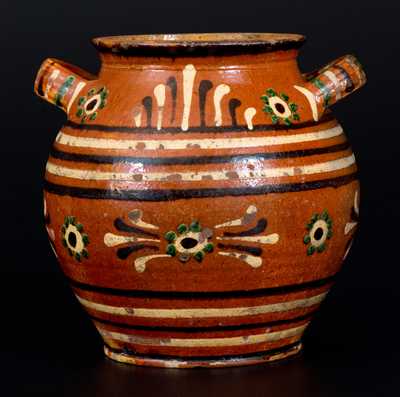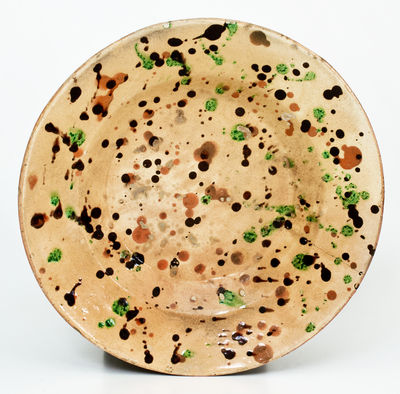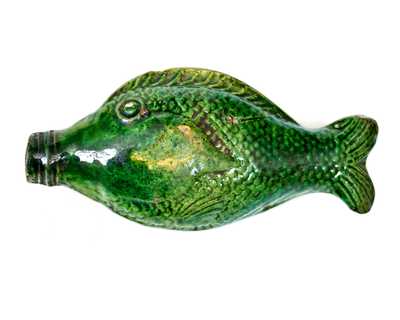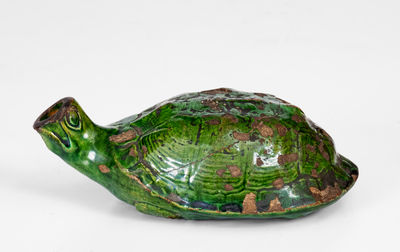Extremely Rare Black-Glazed Redware Jug with Two-Color Slip Decoration, Alamance County, NC origin, late 18th or early 19th century, ovoid jug with footed base, tooled spout, and ribbed strap handle, decorated with a central stylized daisy blossom in orange and whitish slip, flanked by wavy orange stripes extending from the base of the spout to the base of the jug. Horizontal cream slip spot decoration accents the molding at the base of the spout. The top of the handle is additionally decorated with orange slip spotting. This significant new discovery bears several hallmarks of pottery produced in Alamance County, North Carolina during the fourth quarter of the 18th century and early 19th century. These distinctive traits include the stylized daisy blossom composed of simple spots of slip, the vertical line motifs on the sides, and the horizontal spot application around the jug's neck. The use of a black-glazed ground underlying these designs is highly characteristic of regional ware, as is the use of an orange slip, a treatment used sparingly outside of the state of North Carolina. Various utilitarian pieces featuring similar decorations and slip colors have been attributed to Jacob Albright, Jr. and Henry Loy. This form is noteworthy as few North Carolina jugs bearing slip decoration have survived. For a pitcher likely by the same maker or school, see Leland Little Auction & Estates Sales Ltd., Fine & Decorative Arts Auction, September 17, 2011, Lot #41. Literature: for discussion of Alamance County, NC redware and images of similarly-decorated ware, see Beckerdite, Brown, and Carnes-McNaughton, "Slipware from the St. Asaph's Tradition", Ceramics in America 2010; see also Beckerdite, Brown, Hunter, and Carnes-McNaughton, "Earthenware Masterworks from the St. Asaph's Tradition", Antiques and Fine Art Magazine, Winter 2010. Strong condition, considering age and origin. Wear and a glazed-over chip to spout. A small in-the-firing contact mark to handle and minor wear at base of handle. Chipping to foot, including a 1 1/2" chipped area. A faint semi-circular hairline on underside, possibly in-the-firing. Glazed surface survives in exceptional, essentially as-made condition. H 8 1/4".



















